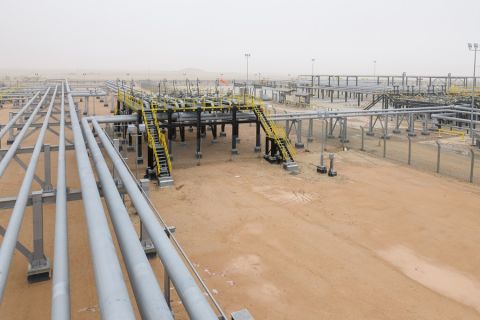In an industry that has long been shaped by volatility, a focus on innovation that drives productivity and efficiency is fundamental. The question facing the oil and gas industry is how operators and service companies can collaborate to deliver a step change in rig site execution in all drilling domains from land operations to offshore plays. The industry requires stakeholders to redefine the rules of engagement in how we collaborate across the value chain from operator to suppliers to create value in performance, innovation, safety, environmental stewardship and industry returns across the cycle.
Consider for a moment the impact of drilling fluids on operational performance and efficiency. The main recurring operational issues that impact cost, performance and safety that can be mitigated through properly engineered fluids include pressure control, hole cleaning, wellbore stability, lost circulation, waste generation and more.
To ensure fluid performance to maximize well value for the operator, having a customized fluid coupled with a mechanical separation solution to drill the overburden is critical to keeping a field viable. This approach improves drilling efficiency and lowers cost with waste disposal. These methods separate cuttings at the surface, ensure optimal treatment and recovery of fluid for reuse, and help maximize the ROP.
The impact of customized fluids on reservoir productivity is key to improving industry returns. Fluid experts should be part of upfront planning when production and completion decisions are made. This ensures that fluids used for reservoir drill-in, wellbore cleanup and completion operations are tested and designed to help protect reservoir permeability, increase productivity and extend the life of the asset.
The value of including fluid experts in production and completion planning can be illustrated with a recent project in Latin America where early collaboration helped increase production in heavy oil wells. By tailoring the proper formulation and anticipating potential downhole issues, Halliburton helped an operator treat more than 100 wells resulting in a 30% production increase throughout the entire field.
Service companies also deliver value to operators through closer collaboration to bring digitalization to drilling and completion fluids and enable separation equipment. Drilling fluid measurements are usually done manually in the field. When this occurs, the nuances of fluid changes are lost between measurements, which are supplied one to four times daily. Detecting these small changes through real-time measurement can result in significant savings, which are realized by enabling the true ROP optimization.
The application of a real-time hydraulics software model to provide predictive analytics is equally important. Predictive analytics enables operators to look ahead of the bit and determine the maximum ROP that can be drilled versus optimizing instantaneous ROP. This helps optimize casing to casing speed. The digitalization of fluid data reduces risk, provides consistent well delivery and speeds up decision- making by connecting people and information.
The value of real-time fluids data can be demonstrated through a recent project in the Middle East where multiple issues related to drilling fluid control in HP/HT conditions were encountered on offset wells. By monitoring fluid data from the Halliburton BaraLogix unit, engineers helped an operator drill its well with zero instability issues 13 days faster than planned. This saved an estimated $650,000 in operational costs and avoided an expensive sidetrack well saving more than $1 million.
Embracing the digitalization and application of customized fluids through well-developed people, technology and processes across drilling and completions can help operators maintain a competitive advantage as they look to succeed through future volatility.
Recommended Reading
Shipping Industry Urges UN to Protect Vessels After Iran Seizure
2024-04-19 - Merchant ships and seafarers are increasingly in peril at sea as attacks escalate in the Middle East.
Paisie: Crude Prices Rising Faster Than Expected
2024-04-19 - Supply cuts by OPEC+, tensions in Ukraine and Gaza drive the increases.
Report: Freeport LNG Hits Sixth Day of Dwindling Gas Consumption
2024-04-17 - With Freeport LNG operating at a fraction of its full capacity, natural gas futures have fallen following a short rally the week before.
Permian NatGas Hits 15-month Low as Negative Prices Linger
2024-04-16 - Prices at the Waha Hub in West Texas closed at negative $2.99/MMBtu on April 15, its lowest since December 2022.
BP Starts Oil Production at New Offshore Platform in Azerbaijan
2024-04-16 - Azeri Central East offshore platform is the seventh oil platform installed in the Azeri-Chirag-Gunashli field in the Caspian Sea.


